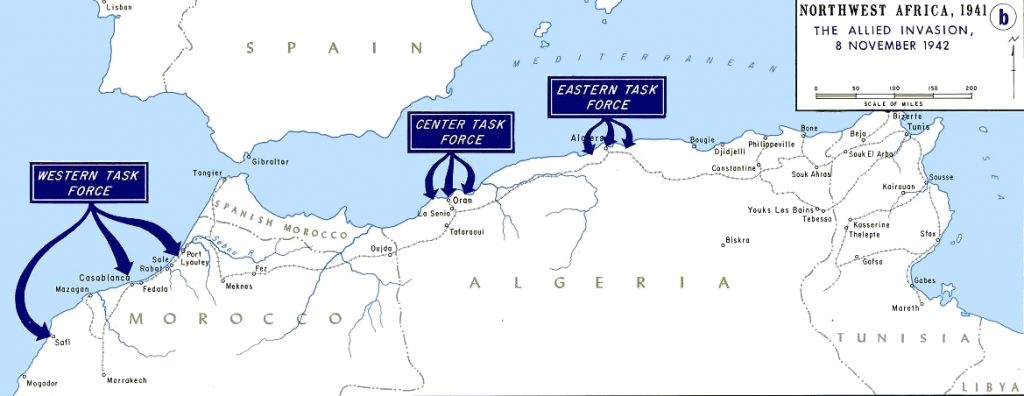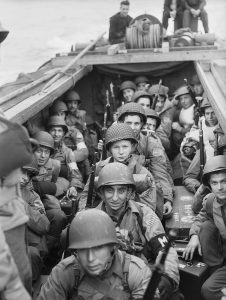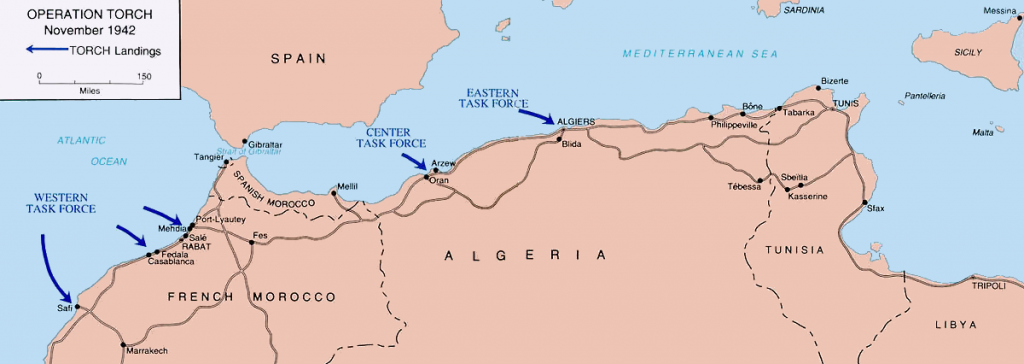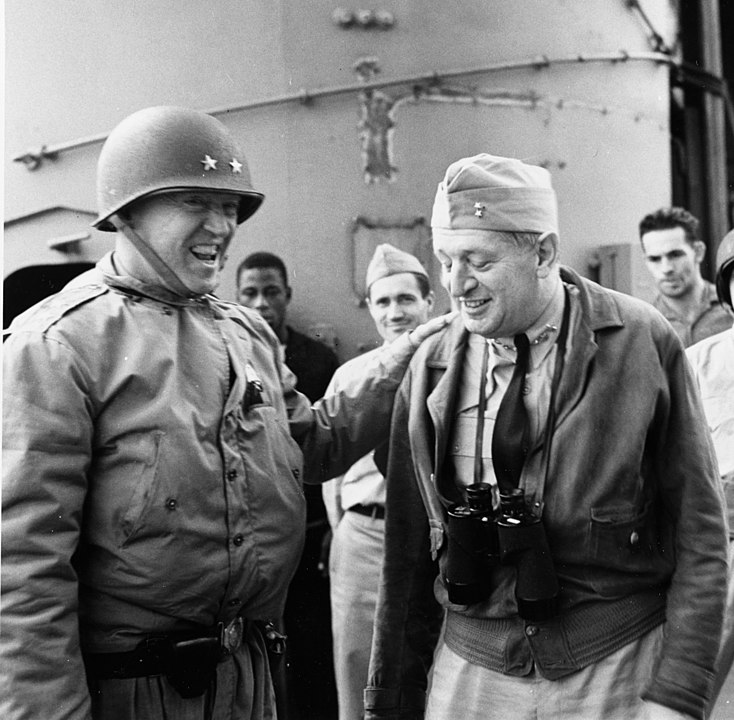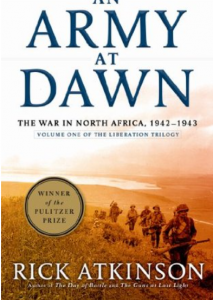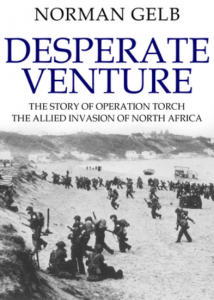Operation Torch
Operation Torch
Overview
Map Source: Public Domain, https://commons.wikimedia.org/w/index.php?curid=187802
Operation Torch was the largest Allied amphibious operation of the war up to that time and the first major airborne assault carried out by the U.S. Torch was the U.S.-British invasion of French North Africa during the Allies’ North African Campaign (June 10, 1940 to May 13, 1943). Torch was inserted between campaigns in the Libyan and Egyptian deserts (Western Desert Campaign, also known as the Desert War) and in Tunisia (Tunisia Campaign). Operation Torch landed over 100,000 U.S. and British troops at nine beachheads along the Moroccan and Algerian coasts, assisted by 670 vessels and heavy air cover. During the eight-day operation, Allied forces suffered close to 500 dead and 720 wounded; Vichy forces suffered nearly 1,400 dead. and 2,000 wounded.(6)
The Operation
Overview
The Allies organized three amphibious task forces to simultaneously seize the key ports and airports in Morocco and Algeria, targeting Casablanca, Oran and Algiers. Then the Allies would move eastwards into Tunisia.
Western Task Force
A Western Task Force (aimed at Casablanca) was composed of American units, with Major General George S. Patton in command and Rear Admiral Henry Kent Hewitt heading the naval operations. This Western Task Force consisted of the U.S. 3rd and 9th Infantry Divisions, and two battalions from the U.S. 2nd Armored Division—35,000 troops in a convoy of over 100 ships. They were transported directly from the United States in the first of a new series of UG convoys providing logistic support for the North African campaign.[15]
Center Task Force
The Center Task Force, composed from assets based in the United Kingdom, also encountered resistance by French shore batteries and ground forces to its 8 November landings. Vichy French warships undertook a sortie from Oran’s port, but were all either sunk or driven ashore. After an attempt to capture the port facilities failed, heavy British naval gunfire brought about Oran’s surrender on 9 November..[19]
Eastern Task Force
Operations of the Eastern Task Force (also arriving from Britain) were aided by an anti-Vichy coup that took place in Algiers on November 8. Thus, the level of French opposition at the landing beaches was low or non-existent. The only serious fighting took part in the port, where U.S. Army Rangers were landed to prevent the French from destroying facilities and scuttling ships. Resistance had been overcome by the evening of November 10, when the city was surrendered to the U.S. and British forces.[22]
Task Force 17 (Carrier Group)
Commanded by Rear Admiral Frank Fletcher
Heavy Aircraft Carriers
Quick Facts:
| Date | November 8-16 1942 |
| Location | French Morocco, French Algeria |
| Result | Allied Victory |
| Strength | |
| U.S./ British/ Free France Naval Only: Canada Netherlands Australia |
Ground forces:
|
| Germany/ French Algiers/ French Morocco/ Italy |
Ground forces:
|
| Casualites / Losses | |
| Allies: | United States:
|
| Axis | Vichy France:
|
| Source: https://en.wikipedia.org/wiki/Operation_Torch | |
Resources
Web Sites:
Books:
REFERENCES
- ** Top Image: The USS Yorktown is hit on the port side by a torpedo launched from a plane off the Japanese aircraft carrier Hiryu during the Battle of Midway on June 4, 1942. (Image: National Archives and Records Administration, 80-G-414423.)
- *M3 Tank Picture Credit: https://www.warhistoryonline.com/world-war-ii/ships-planes-tanks-operation-torch.html?chrome=1&A1c=1
- *George Patton Picture Credit: By Unknown author – https://ru.pinterest.com/pin/563864815825713713/, Public Domain, https://commons.wikimedia.org/w/index.php?curid=73447315
- (2) By Unknown author – U.S. Navy photo USAF-3725, Public Domain, https://commons.wikimedia.org/w/index.php?curid=166484
- (6) https://ww2days.com/torch-operation.html
- (15) https://en.wikipedia.org/wiki/Operation_Torch
- (19) https://www.history.navy.mil/browse-by-topic/wars-conflicts-and-operations/world-war-ii/1942/operation-torch.html
- (22) https://www.history.navy.mil/browse-by-topic/wars-conflicts-and-operations/world-war-ii/1942/operation-torch.html


